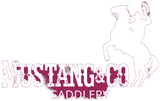
What Saddle Should I Buy? Saddles Explained
Purchasing a new (or secondhand) saddle is an exciting experience, however with so many saddles out there on the market this can be overwhelming to know where to start. There’s an enormous range of types, styles, and material choices that it’s important to have a clear idea of what saddle you would like before you start your search.
What kind of riding will you be do?
The first place to start with when choosing a saddle is to ask yourself what kind of riding I want to do, as this will play a big part in determining what style of saddle you need. Are you planning on doing pleasure riding? Campdrafting? Mustering? Dressage? Or perhaps jumping?
If you’re wanting to do pleasuring riding, trail riding or a bit of all round riding you may want to consider purchasing an All-Purpose saddle, or a stock saddle for a more secure seat.
If you’re planning to work cattle, either mustering on a farm, campdrafting, team penning or ranch sorting then your top picks would be a stock saddle or fender.
For those riders that are more interested in the English disciplines such as dressage, jumping and eventing then you can get discipline specific saddles, such as a dressage saddle or jumping saddle. If you’re staring out and wanting to give all these disciplines a go at low level, then you may be best starting with an all-purpose saddle that sits somewhere between a dressage and jumping saddle.
Stock Saddle
The Australian stock saddle is a very popular saddle used by riders all over the world. It’s versatile and made for long days in the saddle. It’s used for a multitude of activities including cattle work, station work, starting young horses, everyday pleasure riding, trail riding, endurance riding, polocrosse and is also used in Australian Campdrafting competitions and stockman challenges.
Traditionally the stock saddle is designed for security and comfort in the saddle, with a deep seat, high cantle and the signature monkey ears for added security in the seat.
Modern stock saddles have seen the development of "half breed" saddles that incorporates the independent swinging fender and stirrup style of the western saddle with the traditional Australian tree and seat style. There are also "cross breed" saddles that combine other western saddle elements, such as a saddle horn or a western cantle design, with traditional Australian elements, such as the pommel swells and deep seat.


1. Ord River Leather Campdraft Saddle 2. Status Synthetic Stock Saddle
All-purpose saddle
The All-Purpose Saddle is an English style saddle that has been designed to enable horse and rider to participate in multiple disciplines with one saddle, which makes it the most versatile and economical saddle for the English riders.
The All-Purpose saddle sits between a dressage and a jumping saddle and allows riders to participate in these sports and more with one saddle. The front flap of an All-Purpose Saddle is forward enough to keep the rider’s knee on the saddle while jumping but straight enough to allow a longer leg for dressage or while schooling flatwork in the ring.
An all-purpose saddle is a great first saddle selection for riders wanting to have a go of everything from the English disciplines, pleasure riding, trail riding, pony club and adult riding club.

3. Secondhand Sundrom Saddlery All Purpose Saddle
Dressage Saddle
The Dressage Saddle is designed to help the dressage rider adopt the most centrally balanced seat while performing the movements of a dressage test. Dressage saddles have a deep seat, and the flaps are cut long and straight. This design helps the rider sit deeply into the saddle and provides close contact with the horse.
Dressage saddles can also be used for hacking and show horses, traditionally show saddles have smaller, flat knee rolls, however the modern dressage saddle is becoming more common in the show ring.

Jumping Saddle
The jumping saddle’s most distinctive feature is a forward-cut flap that allows for a shorter stirrup length. The flap often has supportive padded knee rolls, especially for show jumping and cross-country. The balance of the seat is further back and comparatively flat, with the cantle and pommel low so that they do not interfere with the rider's jumping position.

5. Cavalier Close Contact Jumping Saddle availble for custom order.
Choice of material
Traditionally saddles have been made from leather and still today leather saddles dominate the market. Riders often opt for leather as it will last a lifetime if looked after correctly and looks classy. Other riders opt for synthetic saddle, sometime called Equileather, for its easy to clean properties. These saddles are also less affected by water. Most saddle types are now available in leather and synthetic, so it really comes down to budget and personal preference.


6. Status Synthetic Pony Pad 7. Bates Presieux Leather Dressage Saddle
Find the perfect fit for your horse
Remember to always have your saddle fitted by a saddle fitter to ensure that your horse is comfortable and able to perform to the best of his abilities. Having an ill fitted saddle on your horse can cause long term and permanent damage to your horse's back. Ill fitting tack can also make a horse reactive and show signs of negative behaviour, which can become dangerous for both the horse and rider. Having your saddle fitted by an expert is the best way to know you’re doing best by your horse.
